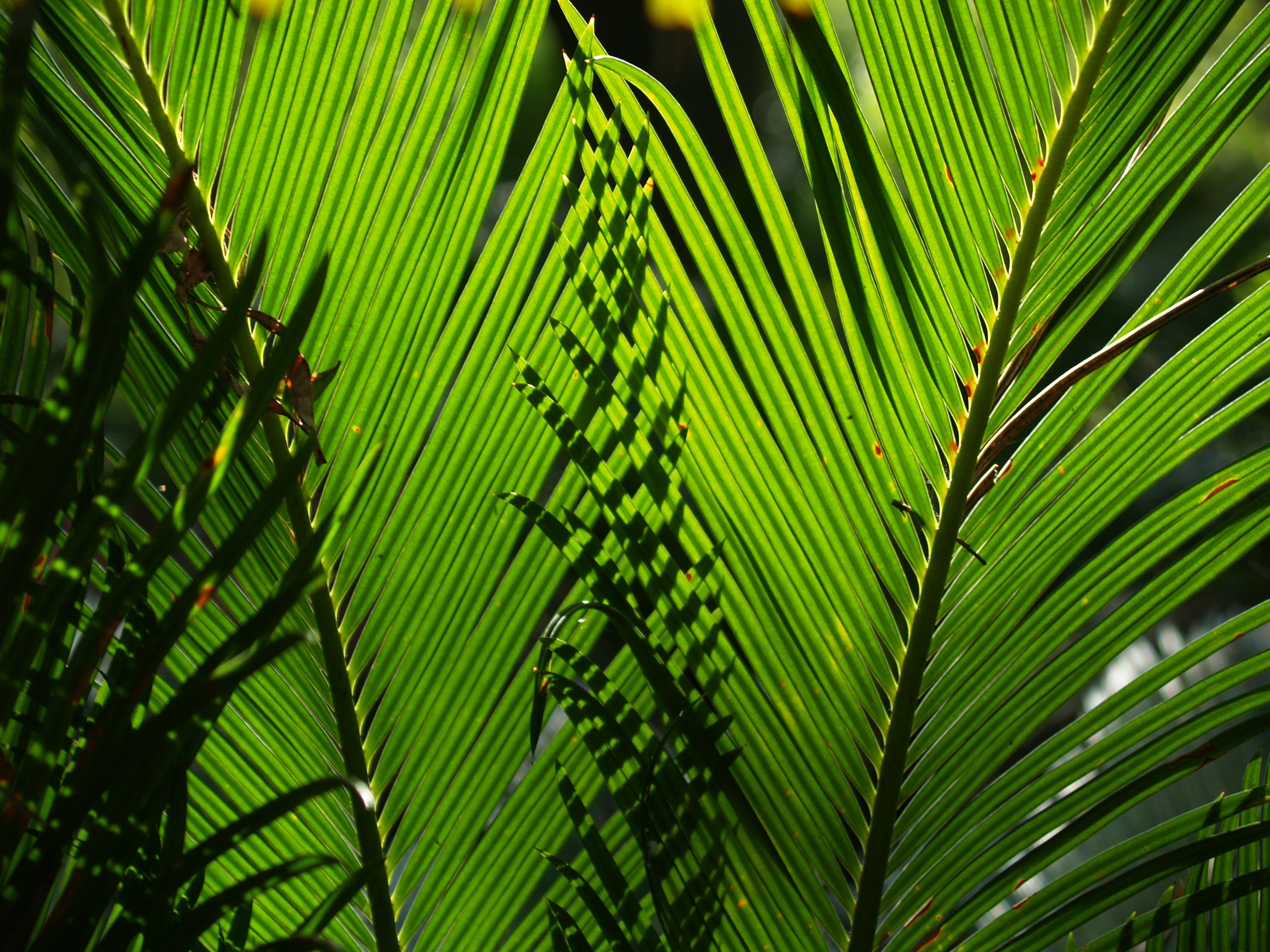
King Sago Palm
Cycas revoluta
Family and description
Member of the Cycadaceae family, this species has a single erect, branched trunk with a tuft of pinnate leaves at the apex. The trunk is underground in young plants and grows with age, reaching a height of 6 to 7 m in older specimens (over 50 years old).
It has a crown of glossy dark green leaves, coriaceous, about 20 cm in diameter and 1 m long.
The King Sago Palm is part of the gymnosperm group, which means it has neither flowers nor fruits.
Its “flowers” are actually leaves that have taken on the role of reproduction. They are golden brown, woolly and are found in the center of the plant. They are produced by adult plants and produce large ovoid seeds of about 3 to 4 cm long.
The roots are reddish, coralloid (resembling coral) and have the particularity of being able to establish symbiosis with Anabaena (a photosynthetic bacterium), with nitrogen-fixing abilities, thus contributing to both the nutrition of the plant itself and soil enrichment.
Being a dioecious plant, the males produce pollen cones and the females produce groups of megasporophils. Pollination can occur naturally by insects or artificially.
Origin and habitat
Being native to southern Japan and China, King Sago Palms spontaneously inhabit intertropical and subtropical zones, do well in well-drained, sandy soils with some organic matter, in places with good sun exposure, although they tolerate shade well.
Uses and curiosities
This plant has existed on the planet for over 150,000 years, before dinosaurs, and is therefore often said to be a “living fossil”. There are fossil records of cycads dating back to the Paleozoic era, plenty from the Mesozoic era and especially from the Jurassic period, also known as the “Age of Cycads”, when this genus dominated the landscape.
It is extremely toxic, affecting the gastrointestinal system.
Cycas revoluta is one of the most widely used cycads in gardens throughout the world, outdoors in temperate climates or in greenhouses.
Nowadays there are fewer and less spontaneous cycads, mainly due to the destruction of tropical forests, their natural habitat, and some are on the verge of extinction.
Several institutions have programmes in place for artificial reproduction of various species, but this effort is insufficient as it does not ensure the genetic diversity of natural populations.
It can be propagated by seed (using appropriate procedures) or by rooting the shoots that form on the trunk.
